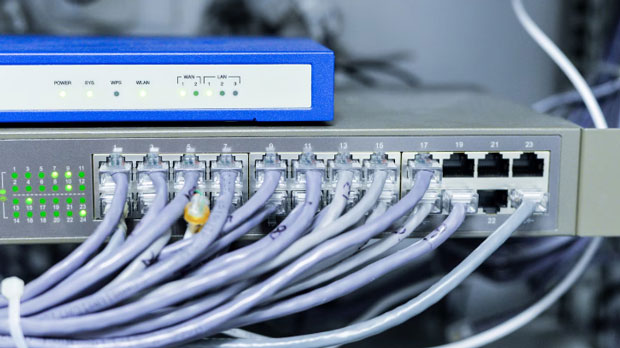How are the pricing trends for US Proxy IP changing?
The price trends of US proxy ips have been fluctuating in recent years due to several market forces. From the rise of demand driven by businesses seeking anonymity and security to the evolving technological advancements in proxy solutions, the cost of US proxy ips is subject to various factors. Initially, these proxies were relatively affordable, but as demand surged and the complexity of services increased, prices began to adjust accordingly. The landscape of US proxy IP pricing is not only shaped by demand and supply but also by the level of service, security features, and the scope of geographical distribution. This article delves into these factors and explores how they influence the overall pricing structure of US proxy IPs. Understanding the Factors Driving Price FluctuationsThe pricing of US proxy IPs has become increasingly complex due to a variety of driving factors. Understanding these factors is crucial for anyone considering the use of proxy services. The key factors include:1. Demand Surge: With the growing trend of digital privacy concerns and the need for geo-specific access, demand for proxies in the US has increased significantly. Businesses involved in market research, SEO activities, data scraping, and e-commerce rely heavily on US proxy IPs to access region-specific content, gather competitive intelligence, and maintain privacy. As demand for such services rises, the pricing naturally follows suit.2. Quality of Service and Features: Not all proxy IPs are created equal, and the price often varies based on the quality and features offered. residential proxies, for instance, are typically more expensive than data center proxies due to their higher reliability and superior anonymity features. Furthermore, proxies offering advanced security protocols and better uptime generally cost more.3. Technological Advancements: As technology evolves, so do proxy services. Sophisticated techniques such as IP rotation, automatic captcha solving, and enhanced security measures add value to proxy services, making them more expensive. These advanced features help bypass restrictions imposed by websites, offering a better user experience. As demand for these enhanced services increases, prices tend to rise.4. Geographic and IP Pool Considerations: Proxies linked to a broader geographical distribution often come at a premium. US proxies connected to major cities such as New York, Los Angeles, or Chicago may be more expensive than those linked to smaller regions. This is because the higher availability and diversity of IPs in major cities increase the value of these proxies.Historical Trends in the Price of US Proxy IPsThe price of US proxy IPs has undergone significant shifts over the years, driven by both technological developments and shifts in demand. Historically, in the early days of proxy usage, prices were relatively affordable as the technology was still emerging, and the market was smaller. During this period, the majority of users were individuals or small businesses requiring limited access.However, as digital privacy concerns grew and the internet became increasingly restrictive, businesses started utilizing proxies on a much larger scale. This resulted in a surge in demand, especially for US proxies, which were essential for accessing geographically restricted content and services. As demand surged, prices began to climb. During this phase, the emergence of large proxy providers, coupled with the complexity of managing vast pools of IPs, led to more segmented pricing based on usage volume and service quality.In recent years, prices have continued to rise steadily. This is due to several factors: the increasing sophistication of proxy services, the introduction of residential proxies, and growing regulatory pressure on proxy providers. Additionally, as websites and platforms develop more advanced anti-bot and anti-scraping technologies, proxy providers have had to invest more in ensuring their IPs remain undetected, further driving up prices.Impact of Proxy Market Segmentation on PricingThe proxy market has become increasingly segmented, with different types of proxies catering to varying business needs. These market segments influence the pricing dynamics of US proxies in different ways. The two main segments are residential proxies and data center proxies, each offering unique features and, consequently, differing pricing.1. Residential Proxies: These proxies are considered the gold standard due to their high level of anonymity. They are IPs assigned by ISPs to homeowners and are much harder to detect compared to data center proxies. Residential proxies are increasingly in demand for tasks like web scraping, price monitoring, and social media management. Their high cost reflects their reliability and the fact that they are harder to procure in large numbers.2. Data Center Proxies: These proxies are hosted on data center servers and are typically faster and more affordable than residential proxies. However, they are also more easily detected and blocked by websites. Despite this, data center proxies remain a popular choice for businesses that prioritize speed and cost-effectiveness over total anonymity. As the cost of managing and scaling these proxies remains lower, they are generally priced more competitively.In recent years, there has also been a rise in mobile proxies, which come at a higher price point due to their advanced capabilities, including the ability to mimic mobile user behavior. This segment adds another layer to the market's pricing structure, as users demand more diverse solutions for their unique needs.Market Trends and Future Price PredictionsThe future pricing of US proxy IPs is likely to be influenced by several factors, many of which revolve around technological innovation and evolving market demands. Looking forward, the following trends are expected to shape pricing:1. Increased Demand for Privacy: With growing concerns about data security and privacy, businesses are likely to continue investing in proxies. This increased demand could push prices higher, especially for those offering enhanced security features.2. Rise in Automation and AI: As artificial intelligence continues to evolve, automation tools may be used more extensively in proxy management. This could drive efficiencies, but the more advanced proxy solutions that incorporate AI for anti-detection purposes may come at a premium.3. Regulatory Developments: Governments and regulatory bodies may impose new restrictions on proxy services. These changes could impact the cost of US proxy IPs, as providers will need to invest in compliance measures to avoid penalties.4. Geopolitical Considerations: Shifts in global politics and the rise of new privacy laws could influence the pricing of proxies. For instance, as the US government enforces stricter rules on data privacy, the cost of proxies linked to US IPs might increase.ConclusionIn conclusion, the price trends of US proxy IPs are influenced by a variety of interconnected factors, including demand, technological advancements, the quality of service, and geopolitical conditions. As businesses continue to rely on proxies for digital privacy, security, and data collection, pricing will likely remain in flux. It is essential for businesses to stay informed about these market trends and consider their specific needs before committing to any proxy services. With the right approach, companies can ensure they are investing in proxies that align with their business objectives while navigating the increasingly complex pricing structure of the US proxy IP market.
2025-02-05

























































